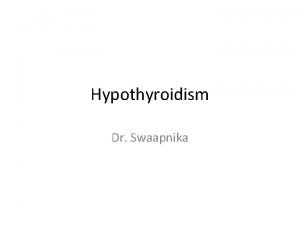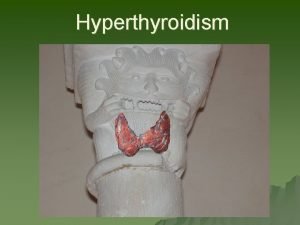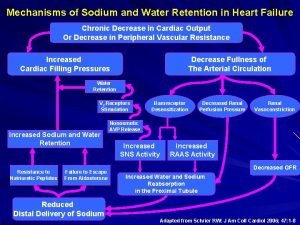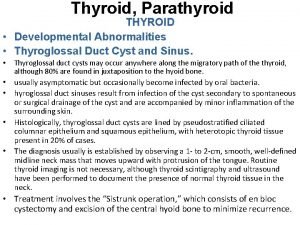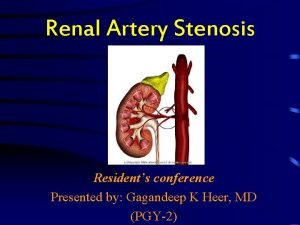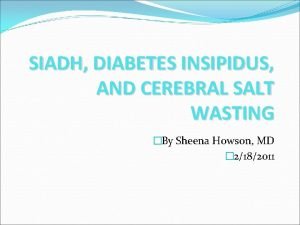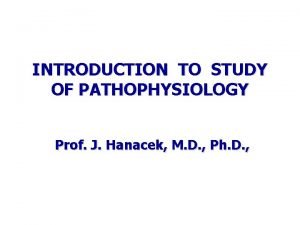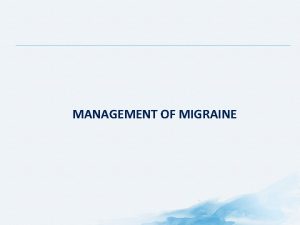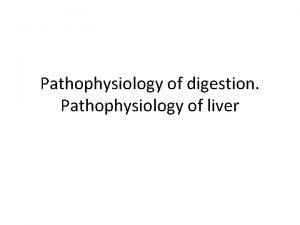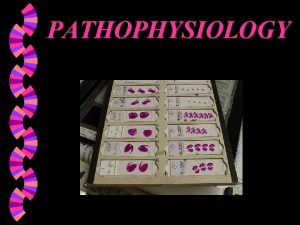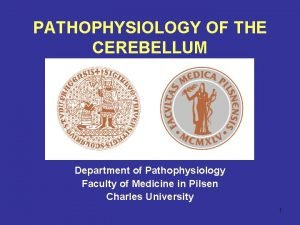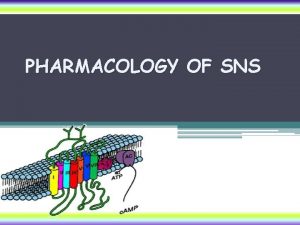Pathophysiology of DM Dr Reem Murad According to






































- Slides: 38

Pathophysiology of DM Dr: Reem Murad

� According to the latest estimates of the WHO, 422 million people suffer from diabetes worldwide – and the number is growing steadily.


Epidemiology of Type 2 Diabetes





�I am going to talk about the pathophysiology of type 2 diabetes, because most new treatments are now being designed based on our understanding of the pathophysiology


Pathophysiology of Type 2 Diabetes � insulin � And resistance beta-cell dysfunction.

Pathophysiology of Type 2 Diabetes The Beta Cell and Insulin

� Insulin is not only produced when you eat, it is produced continuously. But when you eat, more of it is produced. � Very early in diabetes, the "pacemaker" that controls the secretion is affected, and we see disturbances in the frequency and the amplitude of insulin secretion bursts.

Insulin is produced in 2 phases. � In the first phase, there is preformed insulin, ready to be released very rapidly � In the second phase, more insulin is secreted because you have just eaten and your blood glucose goes higher � In diabetics: The beta cell itself does not respond to glucose as easily; � it becomes a little resistant. � Ultimately, these beta cells die.


why did the beta cell die? � In type 2 diabetes, many players come together to attack a beta cell, especially if one is genetically prone to diabetes. � There is the effect of aging, � the deposition of amyloid � the adverse effect of cytokines, eg, tumor necrosis factor alpha, as well as free fatty acids, high triglycerides, � and genetic factors.


� we lose about 40% to 50% of beta-cell function as we develop diabetes.

The Alpha Cell and Glucagon � Normally, if you eat a meal and your glucose rises, insulin will also increase and glucagon is suppressed, which is produced by the alpha cells



The Incretin Hormones � Incretin hormones are produced by the gastrointestinal (GI) tract in response to incoming nutrients. and have the ability to stimulate insulin release very quickly � There are 2 hormones that we are concerned with � One is glucagon-like peptide 1 (GLP-1 (This is a gut glucagon) � The second is glucose-dependent insulinotropic polypeptide (GIP). � These two are very important early stimulators of insulin secretion, even before glucose comes into the picture

The Incretin Hormones



Insulin Resistance and Type 2 Diabetes � Insulin resistance is probably the earliest abnormality � One of the most common causes of insulin resistance is obesity � As time goes on, beta cells cannot keep producing this insulin. As their function starts to decline,




Obesity and Insulin Resistance fat distribution � visceral adiposity � in the liver causing fatty liver � leaking of the FFA from the adipocytes into muscle and interfere muscle insulin action.






Glucose toxicity � When a beta cell in a patient with diabetes is exposed to higher blood glucose, its own ability to make insulin is suppressed. � it makes insulin resistance even worse. Now you have beta cells working even harder and struggling.

Risk factor : non modianittiable

Risk factor : modianittiable
 Reem murad
Reem murad Reem murad
Reem murad Afonso murad
Afonso murad Beto carrero morreu quando
Beto carrero morreu quando Reem fahey
Reem fahey Tierra amara
Tierra amara Mrs reem nasser
Mrs reem nasser Ace inhibitors in stemi
Ace inhibitors in stemi Reem fahey
Reem fahey Reem amara
Reem amara Reem alkhamis
Reem alkhamis Reem fahey
Reem fahey Reem hamdan
Reem hamdan Reem alkhamis
Reem alkhamis Reem mokhtar
Reem mokhtar Azotemia
Azotemia Pulmonary toilet
Pulmonary toilet How do you confirm appendicitis
How do you confirm appendicitis Disseminated intravascular coagulation pathophysiology
Disseminated intravascular coagulation pathophysiology Chickenpox pathophysiology
Chickenpox pathophysiology Homocystinuria pathophysiology
Homocystinuria pathophysiology Pathophysiology of hypothyroidism ppt
Pathophysiology of hypothyroidism ppt Tachicardis
Tachicardis Burn injury pathophysiology of burns
Burn injury pathophysiology of burns Pathophysiology of sodium and water retention
Pathophysiology of sodium and water retention Vagal maneuvers
Vagal maneuvers Choroid tubercles
Choroid tubercles Thyroglossal cyst pathophysiology
Thyroglossal cyst pathophysiology Mitral regurgitation symptoms
Mitral regurgitation symptoms Hypertensive emergency vs urgency
Hypertensive emergency vs urgency What is pathophysiology
What is pathophysiology Di vs csw
Di vs csw Diarrhea plan a
Diarrhea plan a Etiology of bronchial asthma
Etiology of bronchial asthma Lund and browder chart formula
Lund and browder chart formula Nervous mechanism for regulation of blood pressure
Nervous mechanism for regulation of blood pressure Pathophysiology of hiatal hernia
Pathophysiology of hiatal hernia Examples of pathophysiology
Examples of pathophysiology Osteopern
Osteopern





















